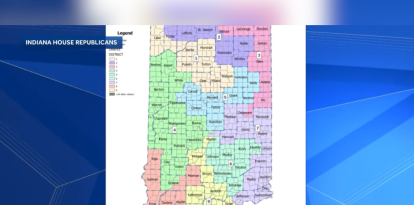Republican lead narrows ahead of November elections
Abortion or the fall in oil prices favors democrats, but debt forgiveness may slow their rise.

Elecciones / Kgroovy (Flickr).
The history of electoral cycles dictates that mid-term elections in a president's first term are won by the opposing party. It may be because Americans are wary of power and do not want the new president to accumulate too much in his hands. Or it could be that presidents begin to disappoint their constituents from the beginning of their term. But this is what usually happens.
Everything indicates that this is what will happen in November: the Republicans will regain control of the House of Representatives, while the Senate remains in dispute, with an advantage for the Democratic Party. But in recent weeks the Democrats are showing signs of growing strength, which has led some analysts to question the possibility that they will retain control of both chambers.
Republicans win in the House of Representatives
It will not be easy, according to current forecasts. 270 to win predicts the GOP will pick up 219 seats, to 203 for the Democrats, with 13 tied races. In any case, it appears that the Republican Party will surpass the 218 that grants a majority.
Other survey-based forecasts tell the same story. FiveThirtyEight predicts a Republican victory of 229 to 206, while RealClearPolitics expects that victory to be 219 to 182, with 34 tied races.
Recovery of the Democratic Party
But difficult does not mean impossible. The Republican victory, which a month or two ago seemed comfortable, is narrowing as time goes by. On June 29, 538 predicted a 238-197 seat split, with an 88% chance of a Republican victory, to 12% chance of a Democratic win. Today, the probability of a GOP win is 77%, to 13% for the rival party.
RealClearPolitics has also picked up a change in trend, albeit less pronounced. Since June 7, which gave the Democrats 183 seats, it has not given them a greater number of representatives. But the number of tied races has grown (from 29 to 34), so safe GOP seats are now fewer (from 223 to 219).
National ballot and Senate
Another indicator is the Republican Party's advantage in the national ballot. On June 29, the average of polls done by 538 showed a Republican victory in the overall vote of 6 points, while now it is 3.6. RCP sees a much narrower gap: on June 11, the Republican lead was 3.5 points, and now it is 0.8.
The same story is true for the Senate. On June 13, 538 gave the Republican Party a 60% chance of winning control of the Upper House, despite the swing vote of Vice Speaker Harris. Today it is the Democratic Party that has more options: 67% to the Republicans' 33%. 538 forecasts a 51-49 Democratic majority, while RCP gives 46 senators to each party, with 8 races too close to assign a winner.
Abortion and debt forgiveness
The Wall Street Journal quotes Nathal Gonzales and Jacob Rubashkin of Inside Elections, who point to several elements that may have contributed to this evolution in voting intentions: The increasing difficulty of performing abortions following legislative changes in some states after the Dobbs vs. Jackson, the drop in gasoline prices, the of Donald Trump, or the election of some weak candidates by the Republican Party.
But there is one element that could slow the progress of the Democrats, and that is the condonation of student debt by Joe Biden. The Biden Administration has decided to shift the cost of the debt from those who acquired it to fulfill their plans, to the taxpayers. It is a measure with few electoral benefits (it benefits sectors that already vote for the Democratic Party), and with great risks: it can Hispanic and working class voters.
























